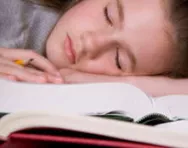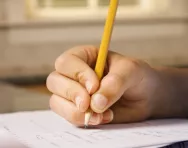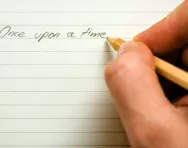TheSchoolRun.com closure date
As we informed you a few months ago, TheSchoolRun has had to make the difficult decision to close due to financial pressures and the company has now ceased trading. We had hoped to keep our content available through a partnership with another educational provider, but this provider has since withdrawn from the agreement.
As a result, we now have to permanently close TheSchoolRun.com. However, to give subscribers time to download any content they’d like to keep, we will keep the website open until 31st July 2025. After this date, the site will be taken down and there will be no further access to any resources. We strongly encourage you to download and save any resources you think you may want to use in the future.
In particular, we suggest downloading:
- Learning packs
- All the worksheets from the 11+ programme, if you are following this with your child
- Complete Learning Journey programmes (the packs below include all 40 worksheets for each programme)
You should already have received 16 primary school eBooks (worth £108.84) to download and keep. If you haven’t received these, please contact us at [email protected] before 31st July 2025, and we will send them to you.
We are very sorry that there is no way to continue offering access to resources and sincerely apologise for the inconvenience caused.
How to use a SATs past paper: KS2 English

Until May 2013, the English KS2 SATs test was divided into four sections: reading, writing (longer task and shorter task) and spelling. Since then there have been some changes to the way that the KS2 English SATs are administered. The reading test remains the same, but the writing test has been replaced by a teacher assessment of the child's writing throughout the whole of Year 6. There is also now also a Grammar, Punctuation and Spelling Test for children to complete.
Free KS2 English SATs past papers from 2003 to last year are available to download from TheSchoolRun and use at home to help your child prepare for the Year 6 tests.
Before starting each test, make sure your child has a quiet, distraction-free room to sit in, with all the materials (pencils, sharpeners, etc.) they’ll need. It may be a good idea to spread the tests out, so you do the reading test on one day and the grammar, punctuation and spelling test on another day. This way they will not feel overloaded.
Here’s how to administer each part of the KS2 English SATs.
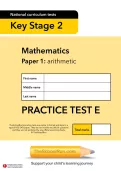
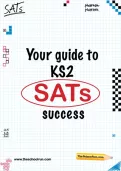
Prepare your child for KS2 SATs today
- Your guide to KS2 SATs
- SATs revision course
- 10 SATs practice papers in English & maths
Reading paper
This test consists of a reading answer booklet and a separate reading booklet. Children have a total of one hour to read all three texts in the reading booklet and complete the questions at their own pace. They can approach the test as they choose, e.g. working through one text and answering the questions before moving onto the next, or reading all three texts first
Ask your child to open the booklet to page three and then explain the following to your child (this is also all written on their instructions page):
Read one text and answer the questions about that text before moving on to read the next text. There are three texts and three sets of questions.
There are different types of question for you to answer in different ways. The space for your answer shows you what type of writing is needed. Write your answer in the space provided. Some questions are followed by a short line or box. This shows that you need only write a word or a few words in your answer.
Some questions are followed by a few lines. This gives you space to write more words or a sentence or two.
Some questions are followed by a large box. This shows that a longer, more detailed answer is needed to explain your opinion. You can write in full sentences if you want to.
For some questions, you do not need to write anything at all and you should tick, draw lines to, or put a ring around your answer.
Read the instructions carefully so that you know how to answer the question.
The number under each line at the side of the page tells you the maximum number of marks for each question.
Other things you need to explain to your child
You should work through the booklet until you are asked to stop, referring to your reading booklet when you need to. When a question includes a page reference, you should refer to the text on that page to help you with your answer.
You have one hour to read the texts in the reading booklet and answer the questions in this booklet.
You should try to answer all of the questions. If you can’t answer a question, move on and return to it later. Remember that you should keep referring back to your reading booklet.
Pay particular attention to any instructions within test questions.
To make sure your answers can be marked, don’t write in the grey areas, on the barcode or on the lines at the top and bottom of the edge of the page and don’t crumple your answer booklet.
If you want to change your answer, put a line through the response you don’t want the marker to read.
Remember to check your work carefully.
You can ask me a question if you are in difficulty, but remember, I can’t help you answer any of the test questions or read any of the words to you.
I will tell you when you have five minutes left. I will tell you when the test is over and to stop writing.
English grammar, punctuation and spelling paper 1
This test consists of about 49 questions. Children have 45 minutes to complete the test. Children are not allowed anything other than a pencil, blue or black pen and rubber.
Explain the following to your child at the start of the test:
Write your name on the front of the booklet.
Turn to page 3. I will read the instructions to you:
In this booklet, your grammar, punctuation and vocabulary are tested.
There are different types of question for you to answer in different ways.
The space for your answer shows you what type of answer is needed.
For some questions you do not need to do any writing.
Read the instructions carefully so that you know how to answer each question.
Some questions have a line or a box for your answer. This shows that you need to write a word, a few words or a sentence.
The number under each line at the side of the page tells you the maximum number of marks for each question.
You will have 45 minutes to answer the questions in this booklet.
You should try to answer all of the questions. If you can’t answer a question, move on to the next one and return to it later.
Pay particular attention to any instructions within test questions.
To make sure your answers can be marked, don’t write in the grey areas, on the barcode or on the lines at the top and bottom of the edge of the page and don’t crumple your test paper.
If you want to change your answer, rub it out or put a line through the response you don’t want the marker to read.
Remember to check your work carefully once you have finished your test.
You can ask me a question during the test, but remember I can’t help you with any questions.
I will tell you when you have five minutes left. I will tell you when the test is over and to stop.
Grammar, punctuation and spelling paper 2
This paper consists of an answer booklet for children to complete. You will need to read out 20 sentences to your child. Your child has the sentences written in their answer book, however each sentence has a word missing. They need to write the word that you have said out loud in the space. This should take approximately 15 minutes, however it is not strictly timed.
Your child will need a blue or black pen or a pencil. They are allowed to use a rubber if they are writing with a pencil. Before you start the test, read these instructions to your child:
Write your name on the front of your test paper.
To make sure your answers can be marked, don’t write in the grey areas, on the barcode or on the lines at the top and bottom of the edge of the page and don’t crumple your test paper.
If you want to change your answer, put a line through the response you don’t want the marker to read.
You can ask me questions during the test, but remember, I can’t help you answer any of the test questions.
I am going to read 20 sentences to you. Each sentence has a word missing in your answer booklet. You should listen carefully to the missing word and fill this in, making sure you spell it correctly.
I will read the word, then the word within a sentence, then repeat the word a third time.
Now read the transcript given in the spelling instruction booklet to your child.
Marking SATs papers: tips for parents
To mark your child’s paper, you’ll need to download the answers and marking scheme (loaded on the same page as each of the SATs papers).
For the Reading Paper, it can be difficult to mark some answers, as they will vary so greatly from child to child, however the mark scheme will give various pointers as to what they want a child to include in an answer (and what is not acceptable).
The Grammar, Punctuation and Spelling Test will be more straightforward with regards to right and wrong answer. To mark your child’s paper, you’ll need the Teacher’s mark scheme which goes through every question and suggests the appropriate number of marks to give depending on how your child has answered.
When your child takes their SATs for real, they'll be given three results: their raw score (the actual number of marks they got), their scaled score (a conversion of their raw score so that results can be compared from year to year) and whether or not they have reached the national standard. Marking your child's tests should help you get a clearer idea of where they need to focus their revision efforts.
